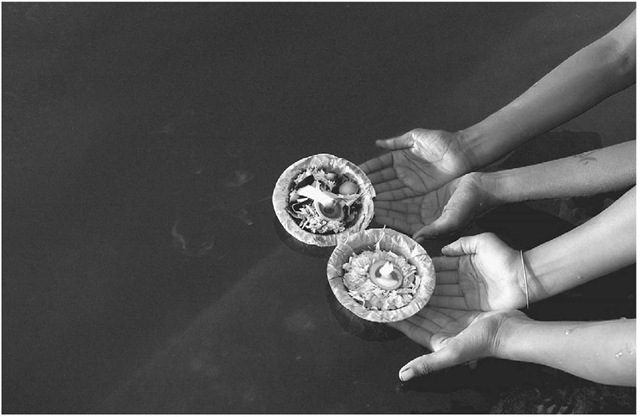The characteristic Sanskrit word for grace is prasada, meaning “favor.” Other Sanskrit words of similar meaning in Hinduism include daya, meaning sympathy, graciousness and tenderness; Kripa, indicating grace in the sense of compassion; and anugraha, meaning loving-kindness—a key term in the drama of salvation.
Grace refers to the unmerited favor of the god, which is freely bestowed on the devout seeker through the redemptive will of the god for the purpose of saving the embodied soul from repeated rebirth. It is characterized as spontaneous and independent of human effort or cooperation.
There is no consensus on whether personal effort brings grace or whether this idea nullifies the view of grace as something given freely, in spite of self-discipline and effort. The sect of SriVaishnavism under Sri Ramanu-jacharya (ca. 1017-1137 CE) split into two factions over this question. Elsewhere it has been argued that in fact, there is no difference between self-effort and grace, and at some point both merge.
Although the term prasada can be found in the Upanishads, the common notion of divine grace gains greater relevance in the devotional period of Hinduism. Worship to the deity (deva) in the Vedic period gives the impression of a transaction in which little or no emotion is invested, but in the Puranas, the emotional content of the sacrifice becomes predominant. The value of the gift may be insignificant; what counts is the devotion to the god, whose grace is sought and who only considers the heart. The Puranas insist on regular devotional worship to the image of the deity (puja), recitation of the names of the deity (kirtanam), visiting holy places (tirthas), and bathing in holy rivers —all to earn god’s grace.
Divine grace is found in a variety of religious contexts. The term is used in the context of devotional worship (puja) to refer to offerings made to the icon of the deity, which then are offered to devotees as representations of god’s grace. Such offerings may include food and drink—which, offered before god’s image, are regarded as the blessed remains of god’s meal that devotees consume so as to make the blessings part of themselves. Prasada is the material symbol of the deity’s grace.
Releasing flower candles on the Ganges River, Varanasi, India.
In the context of the deity’s lila (divine play), grace is used to connote divine activities performed for the purpose of bestowing grace to the devotee who recites, listens, remembers, and glorifies them.
Divine grace is applied to the guru, who serves as a conduit for god’s grace. The guru is regarded as someone who has managed to free himself from the trammels of maya and who, by virtue of his contact with the divine, can act as a channel through which grace can pass from god to the devotee.
Grace appears in the doctrine of an avatar. God incarnates, taking many forms out of compassion and mercy for the devotee. His descent is a gesture of grace and compassion invoked to save his devotee from repeated rebirth.
Finally, through prapatti, or completely surrendering oneself to god, entrusting oneself and whatever belongs to oneself to the lord, the devotee earns god’s grace.

